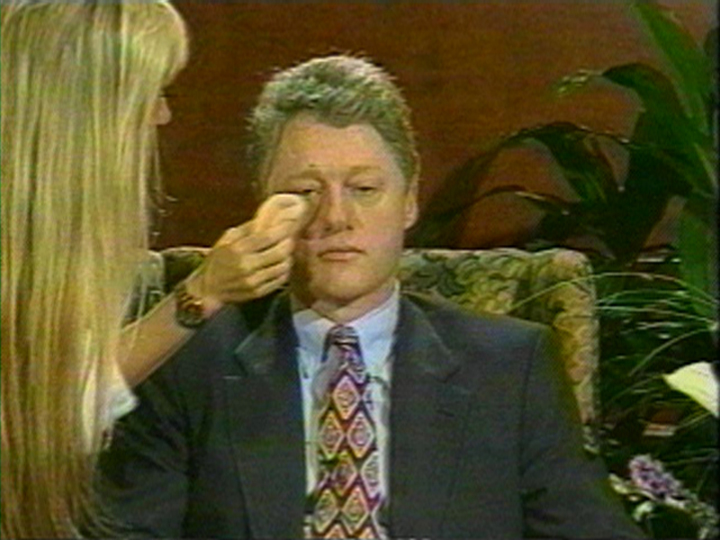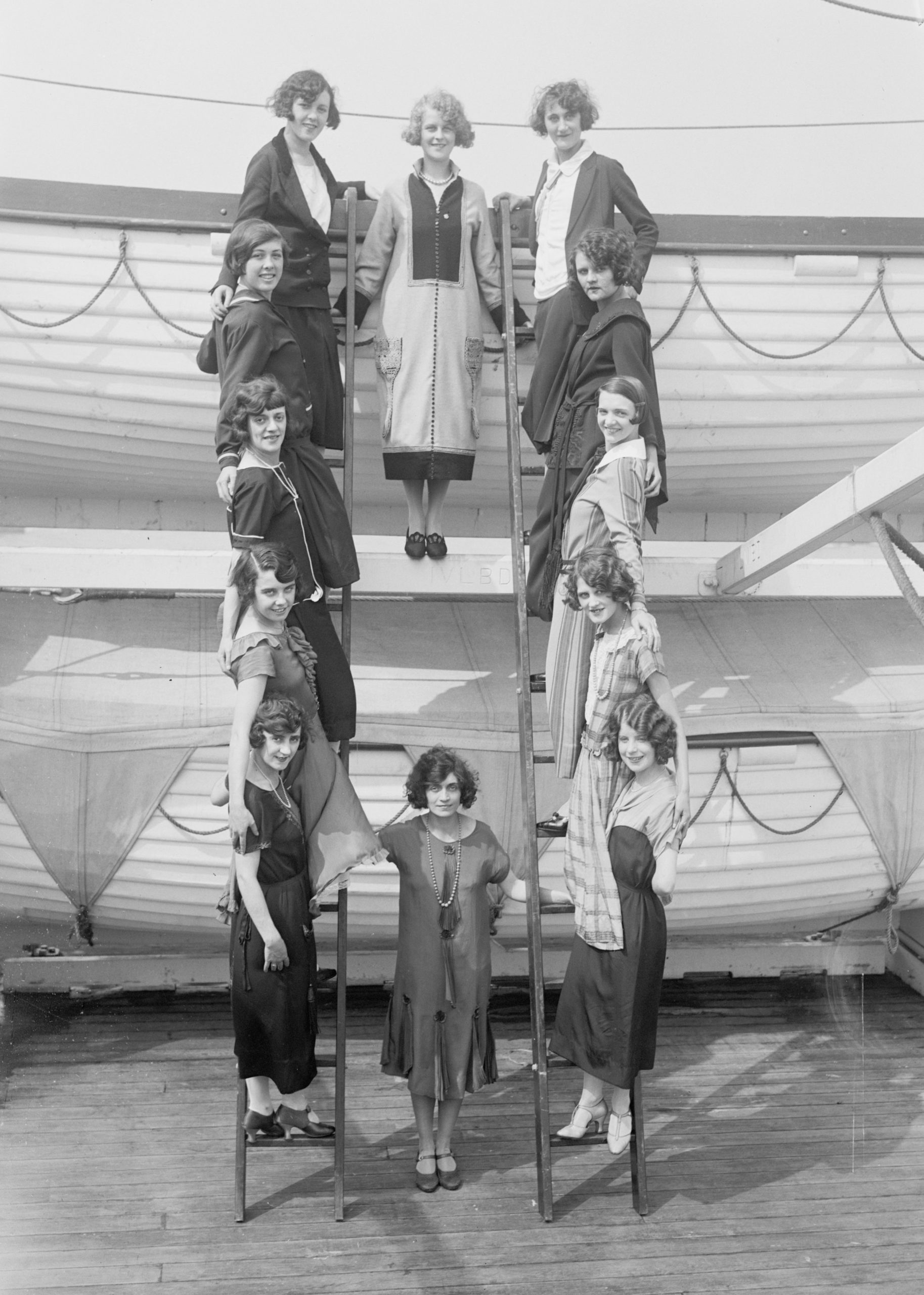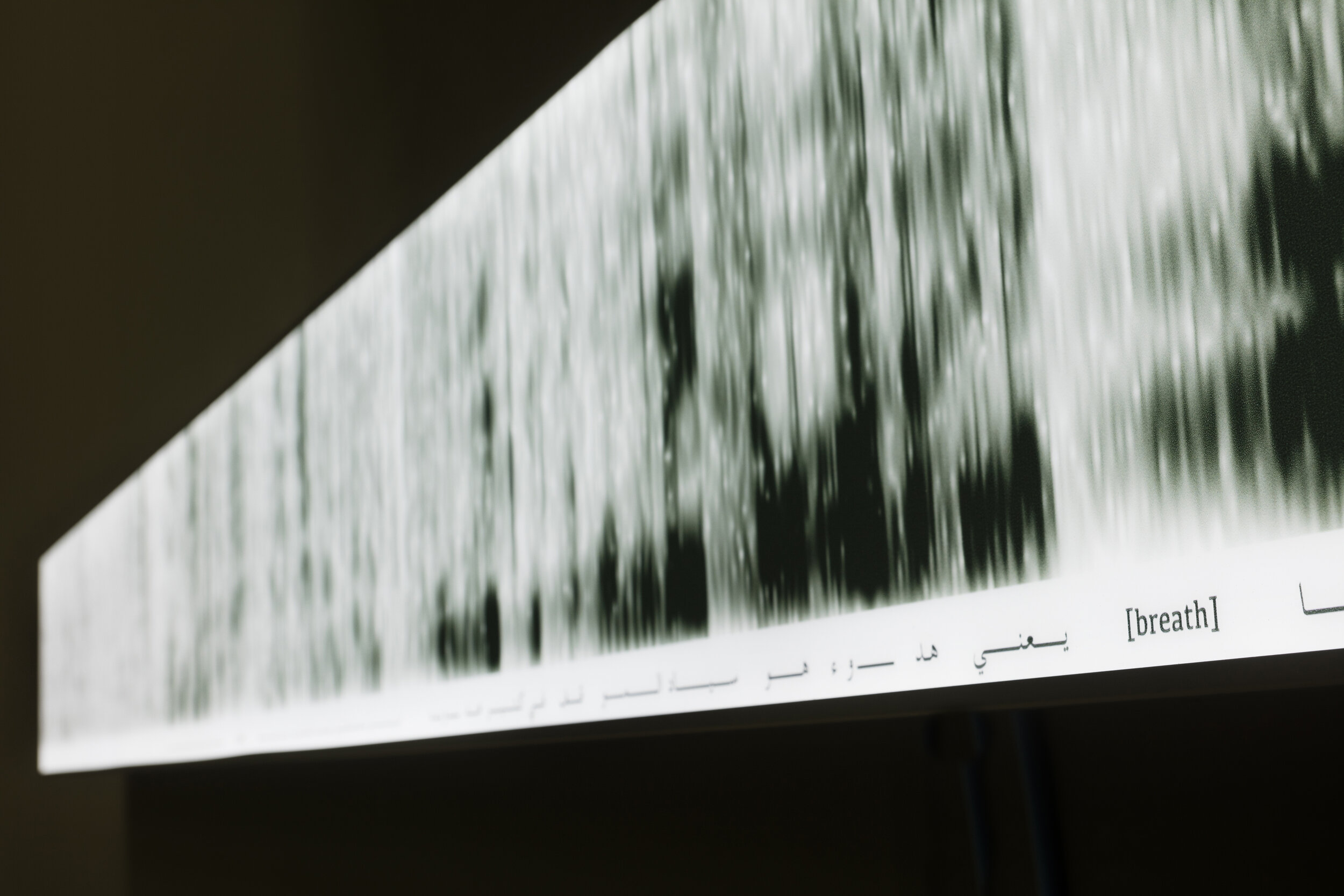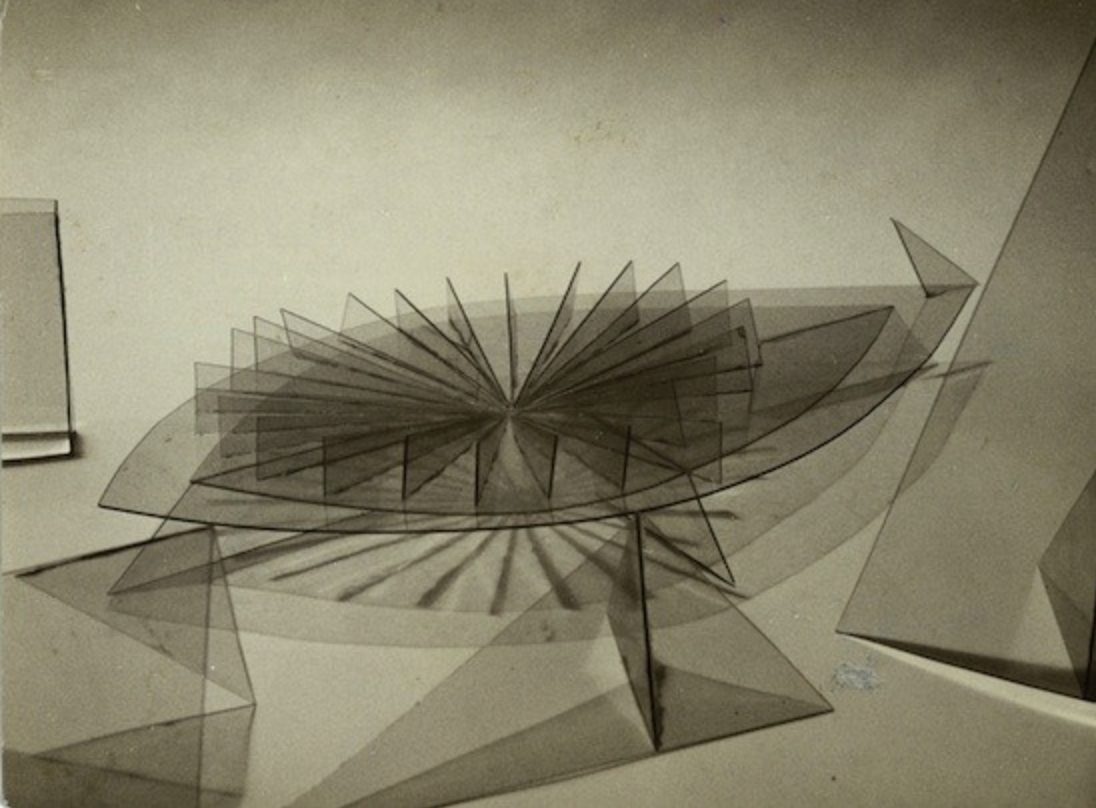OPEN ASSEMBLY
Experiments in Aesthetics and Politics









































Image Associations: In response to Rachel Garfield’s Introduction to “Experimental Filmmaking and Punk: Feminist Audio Visual Culture in the 1970s and 1980s”
Image Associations
This piece uses Rachel Garfield’s Introduction to Experimental Filmmaking and Punk: Feminist Audio Visual Culture in the 1970s and 1980s to explore the exercise of image associations in the work of British artist, Ed Fornieles.
definition: IMAGE ASSOCIATIONS
- An image association is a series of images in which each following image is chosen based on an association garnered by the contents of the preceding image
- This can be seen in the work of contemporary artist, Ed Fornieles
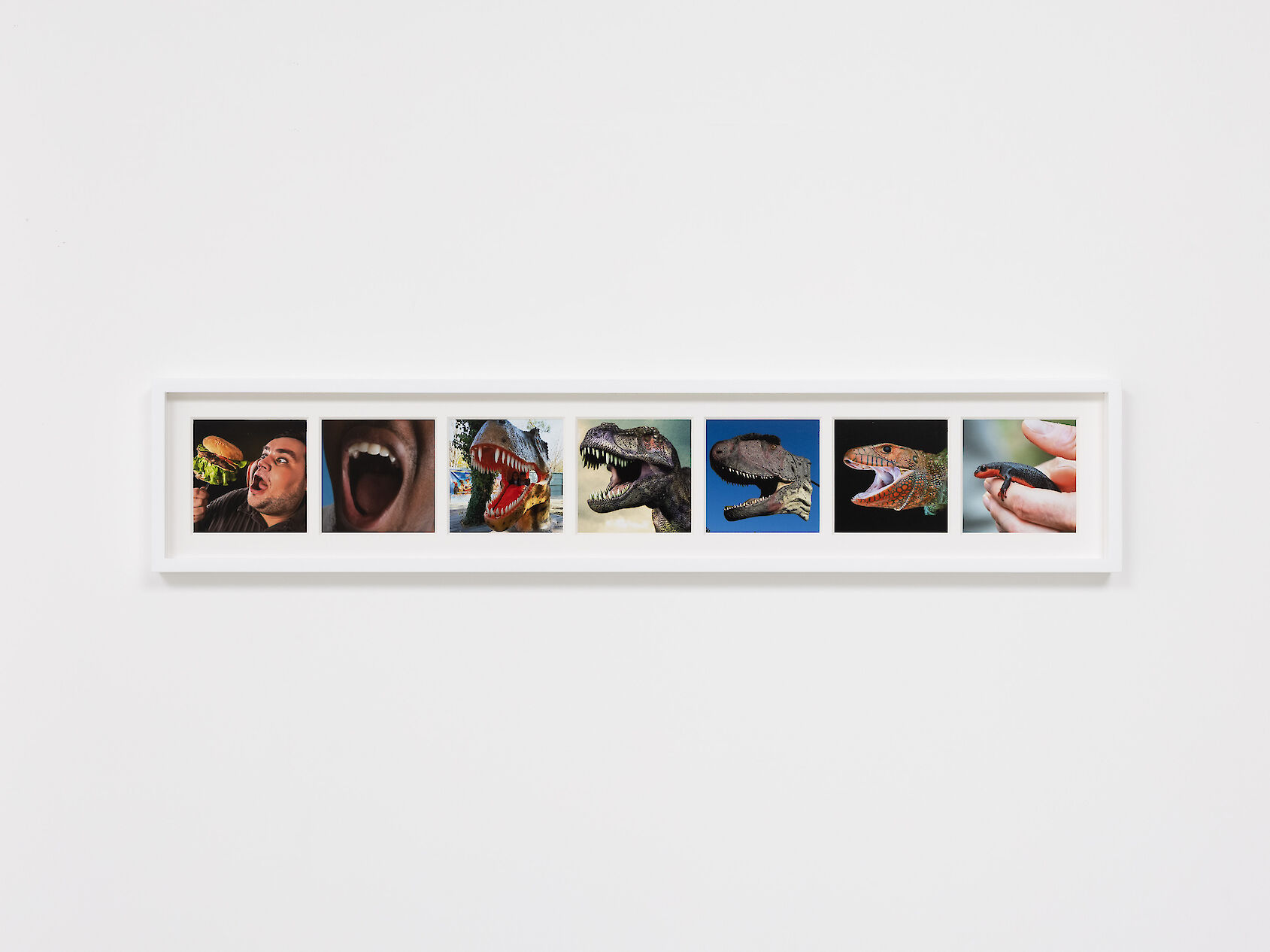
Ed Fornieles. Dinosaurs & Strange Creatures with Mr. Know-it-Owl, 2021
Large format inkjet print on semi gloss photographic paper, mount board with multi aperture windows
18.5 x 93.5 x 4 cm
GARFIELD AND IMAGE ASSOCIATIONS
The following takes Garfield’s focus on DIY, lo-fi filmmaking and puts it towards contemporary (mass and art-based) uses of images
Garfield’s text relates various post-war experimental feminist and punk filmmakers to the early 20th Century art movement, Dada:
“The re-emergence of an approach from Dada identified at the time as a close precursor to punk could be seen as the same event or entity that nonetheless is transformed in a new context of a different period or epoch.” (Garfield)
- Like Garfield’s filmmakers, image associations can be used as a DIY, lo-fi method for understanding image culture today
- Similar to Garfield’s focus, this approach has its roots in Dada’s use of photomontage:
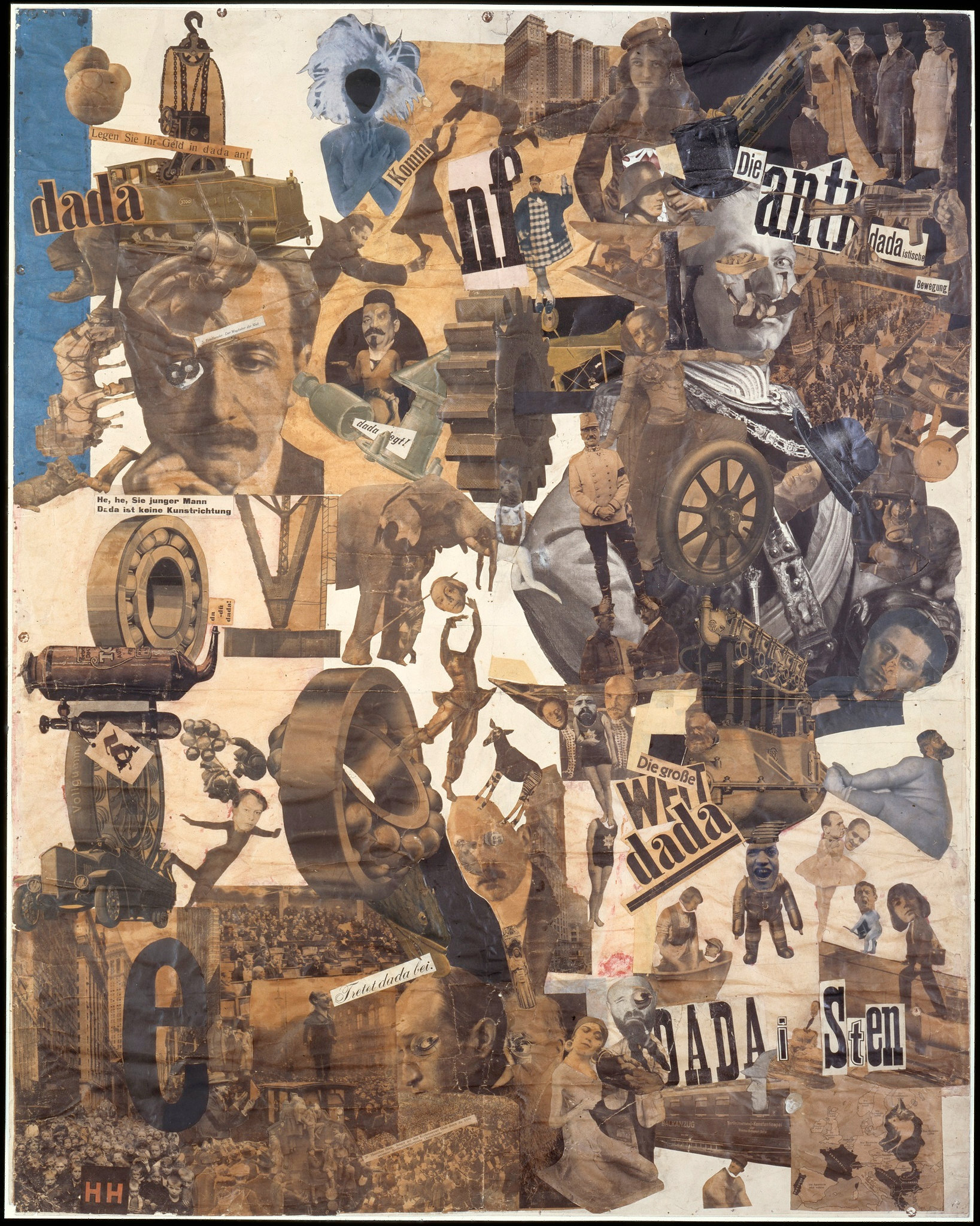
- Similar to Garfield’s focus, this approach has its roots in Dada’s use of photomontage:
Hannah Höch, Cut with the Kitchen Knife Dada Through the Last Weimar Beer-Belly Cultural Epoch of Germany, collage, mixed media, 1919–1920 (Nationalgalerie, Staatliche Museen, Berlin)
- Dada photomontage can be seen as a parent to something like Fornieles’ Associations series
- A closely related second parent can be seen in Soviet filmmakers, such as Kuleshov and Eisenstein’s use of montage in film
- montage could be used to manipulate a viewer’s image/mental association process
- A closely related second parent can be seen in Soviet filmmakers, such as Kuleshov and Eisenstein’s use of montage in film
Example of Kuleshov’s use of montage (known as the Kuleshov effect where more meaning is derived from two sequential shots than one shot in isolation):
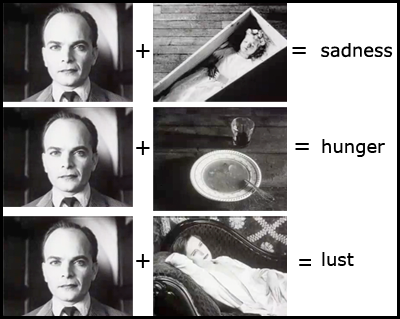
^ while the first image remains the same, combining a differing second image creates [forces] different mental associations for the viewer
^ This approach differs from Fornieles’ contemporary Associations series, in which the image and its following images are read in relation to the subject’s (Fornieles?) own associations
This can be shown in the diagram variants (my own) below:
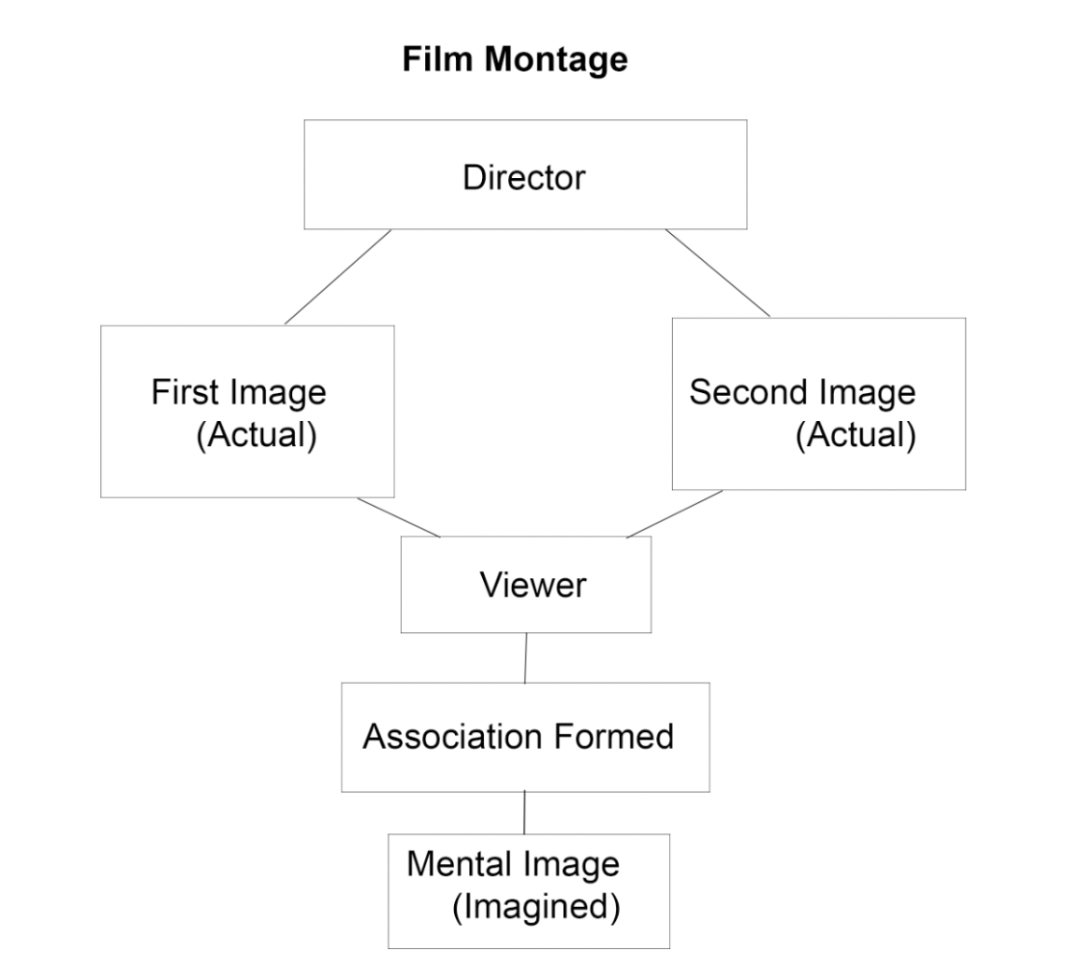
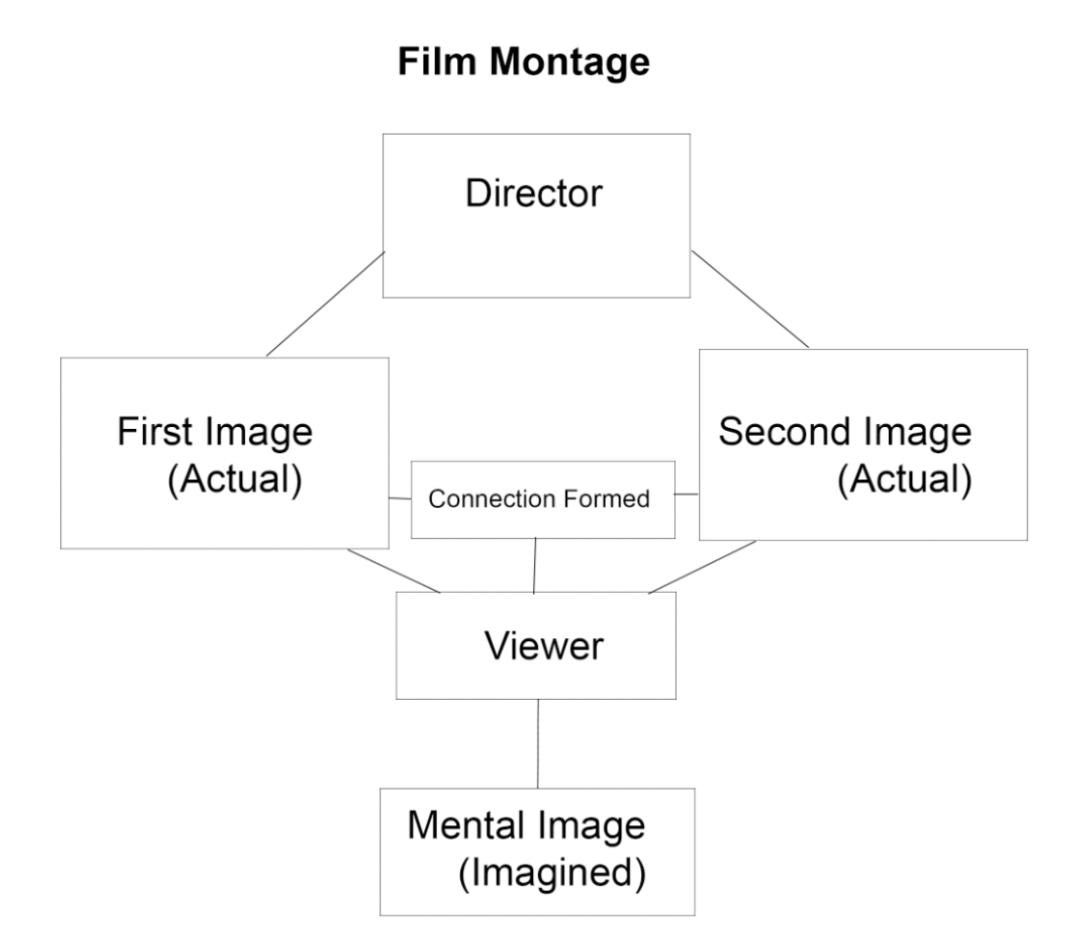
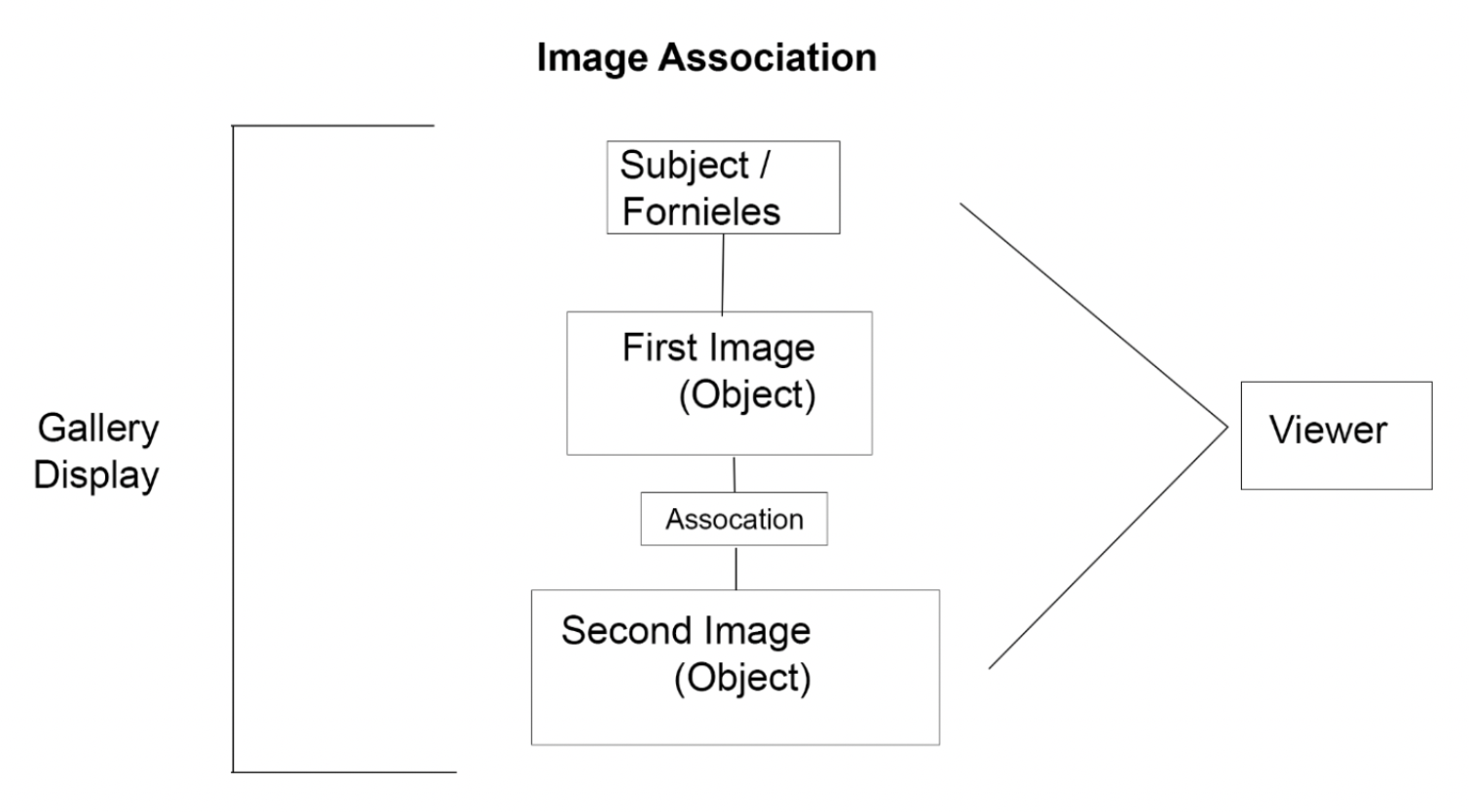
^ A distinction can be seen between the roles of director / artist / subject / object and viewer within film montage and association
- whereas Kuleshov / Eisenstein’s montage allowed the viewer to form their own connection between staged images, Fornieles’ associations presents the viewer with pre-formed associations
- this can perhaps be read in relation to, on the hand, montage’s attempts to control image association which led to its use in propaganda
- and on the other hand, image associations’ connection to social media’s endless visual feed directed towards the ‘individual’ [selfie culture]
- ^ as opposed to a director leading the viewer(s) towards pre-determined connecting images, Fornieles’ Associations simply lets a viewer bear witness to already confirmed associations
- ^ different forms of ‘passiveness’ are set up, which can perhaps be read in relation to the larger cultural role images played in the early 20th century vs. today
- ^ as opposed to a director leading the viewer(s) towards pre-determined connecting images, Fornieles’ Associations simply lets a viewer bear witness to already confirmed associations
- and on the other hand, image associations’ connection to social media’s endless visual feed directed towards the ‘individual’ [selfie culture]
- this can perhaps be read in relation to, on the hand, montage’s attempts to control image association which led to its use in propaganda
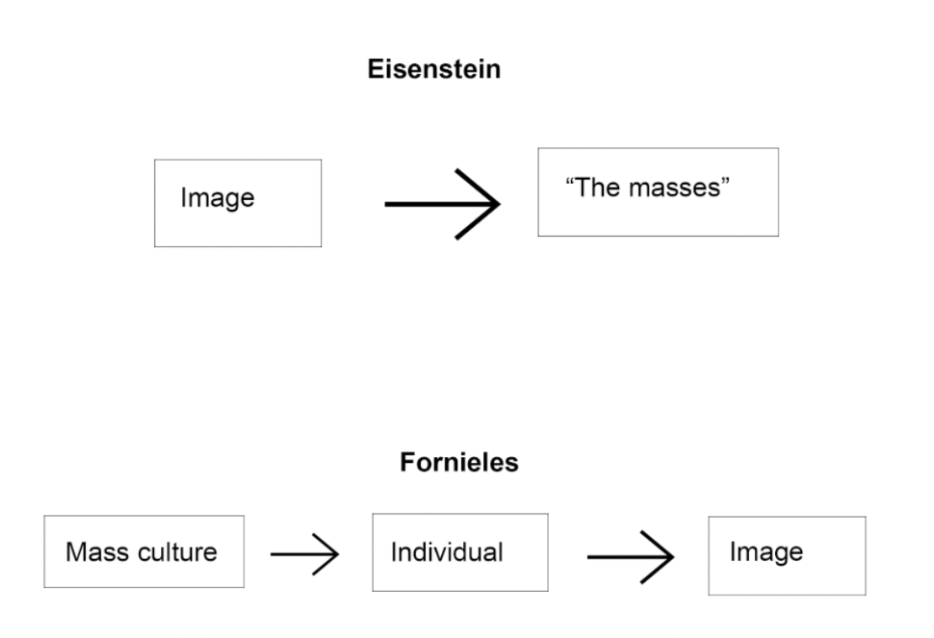
IMAGE ASSOCIATION AS DIY AND LO-FI
-> The image association system is itself a DIY, lo-fi method for both exploring the larger contextual climates of visual culture today (understood in mass culture through endless image streams) and the particulars of simultaneously individual, paired, triad and larger image connections. What is meant by the latter is that while the image association places importance on the contents and choice of an individual image, the connection between each image, its following image, that following image’s relation to its own following image and the overarching relation between all of the images is of course equally relevant.
The below diagram (my own) demonstrates this system:
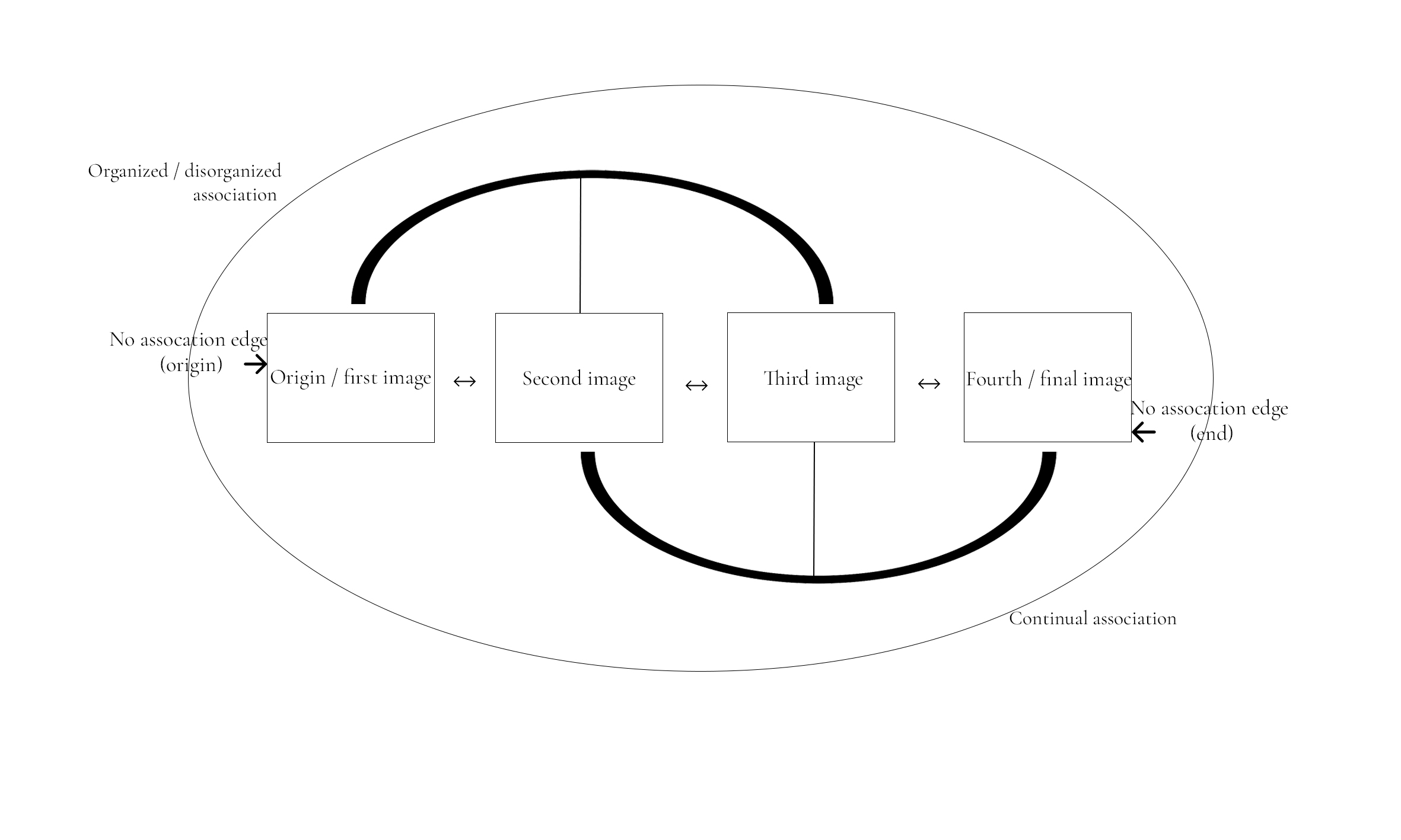
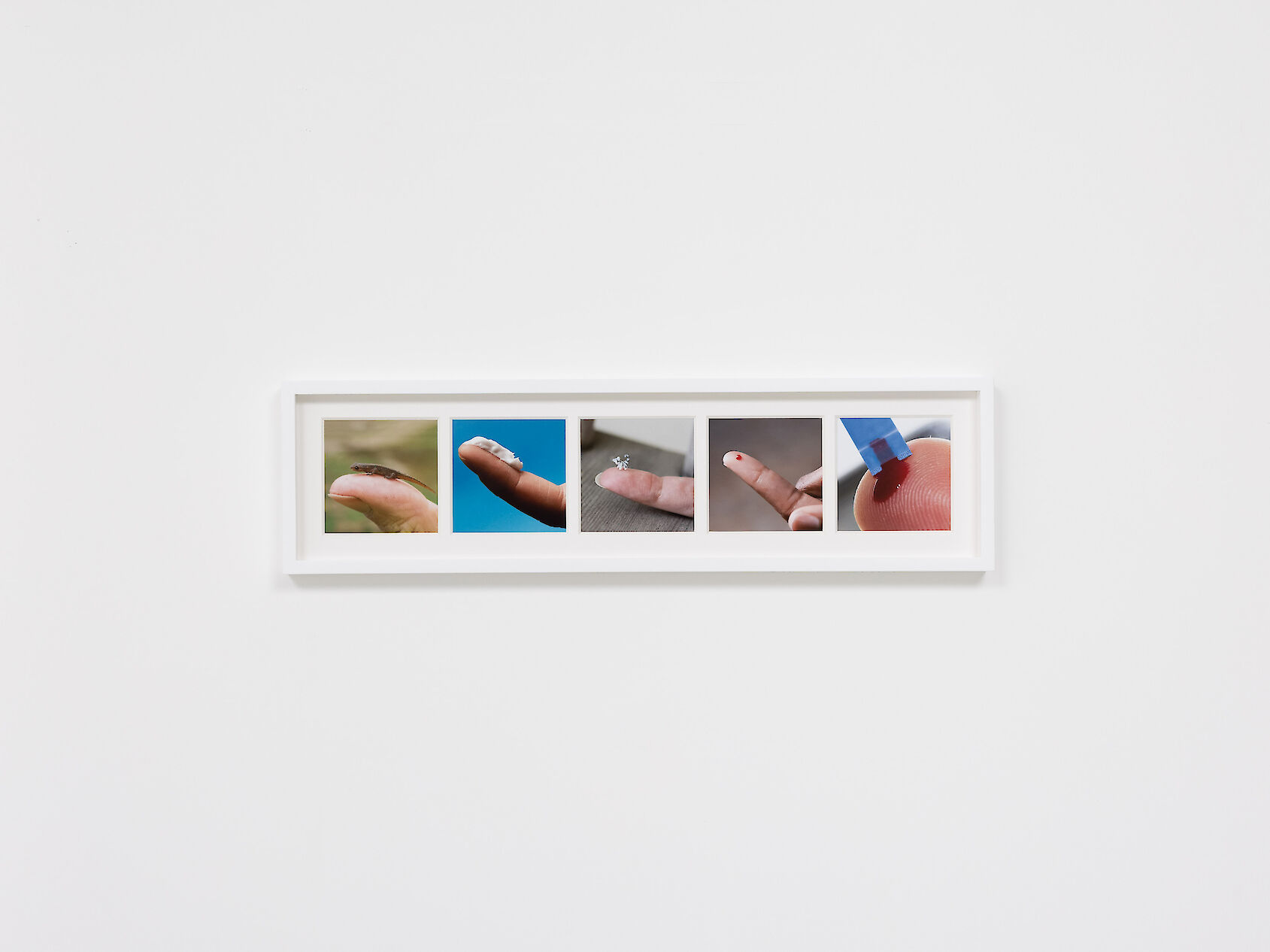
Ed Fornieles. Ghostfinger, 2021
Large format inkjet print on semi gloss photographic paper, mount board with multi aperture windows
18.5 x 69 x 4 cm
^ The diagram shows the potential origin and end points for image association series. You can see a ‘no association edge’ where the first chosen image begins. Subsequent connections form between each image until the end image is reached and a ‘no association edge’ appears again. Encircling all of the images is a ‘continued association’ frame made up of already formed contextual, psychological and societal associations. The diagram exposes the paradoxical nature of the image association technique – while a clear edge (first image) can be visually presented, it is impossible to read any of the origin images in complete isolation or the end images as final.
Also, compare early film experimentation with motion and time:
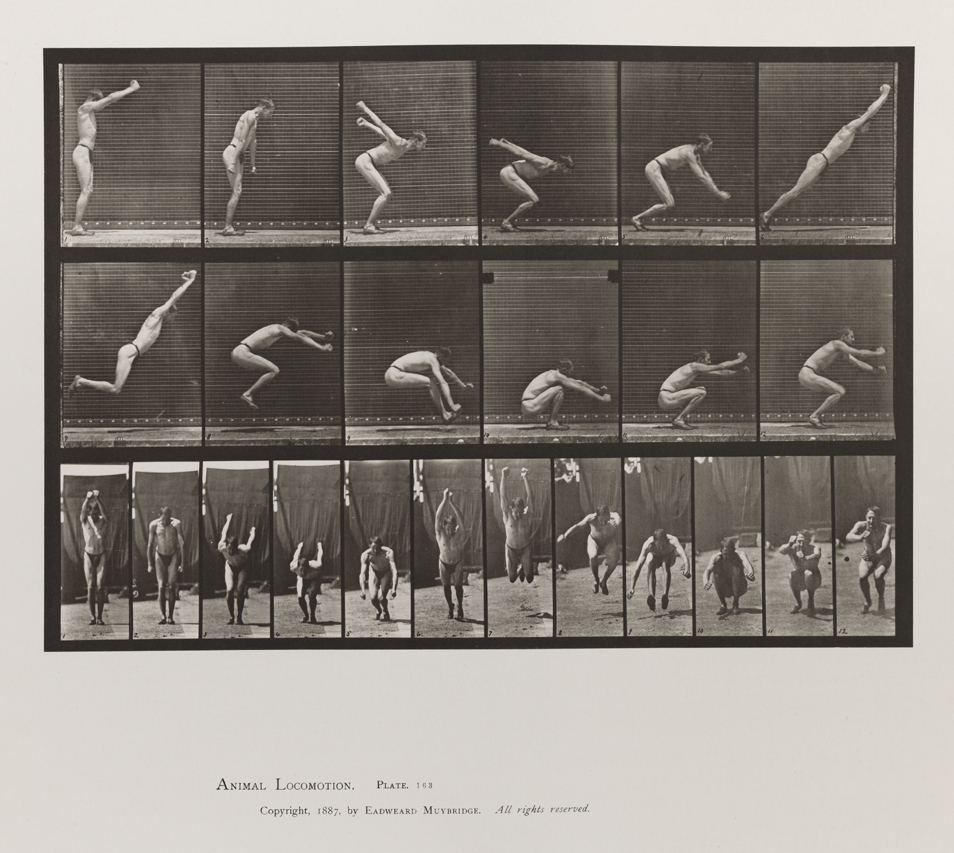
Muybridge. Plate 163, with keywords “Male, Jumping; standing broad jump (shoes),” model is Percy C. Madeira (1862-1942). The black and white grids used to track movement are visible on the top two panels. (Image: University of Pennsylvania Archives).
^ Image series shows ‘capture’ potential of photography. Motion is frozen. “Space in between” is muted but present
- Each photo follows necessarily from real life movement
- Motion is frozen in each photo but realised through series as a whole
- Association between each photo is predictable; Fornieles’ Association series is seemingly spontaneous (origin), unexpected (origin) and predictable (associations)
Compare with Hollis Frampton’s 1969 film, Lemon, showing the slow movement of light over a single object:
^ use of light, time and object is both predictable and illusory
- Clear space in between [image break; associative formation] is invisible in film
- Origin point (first frame) leaks into end point (final frame)
Potential origin points for linear work (arrows my own):
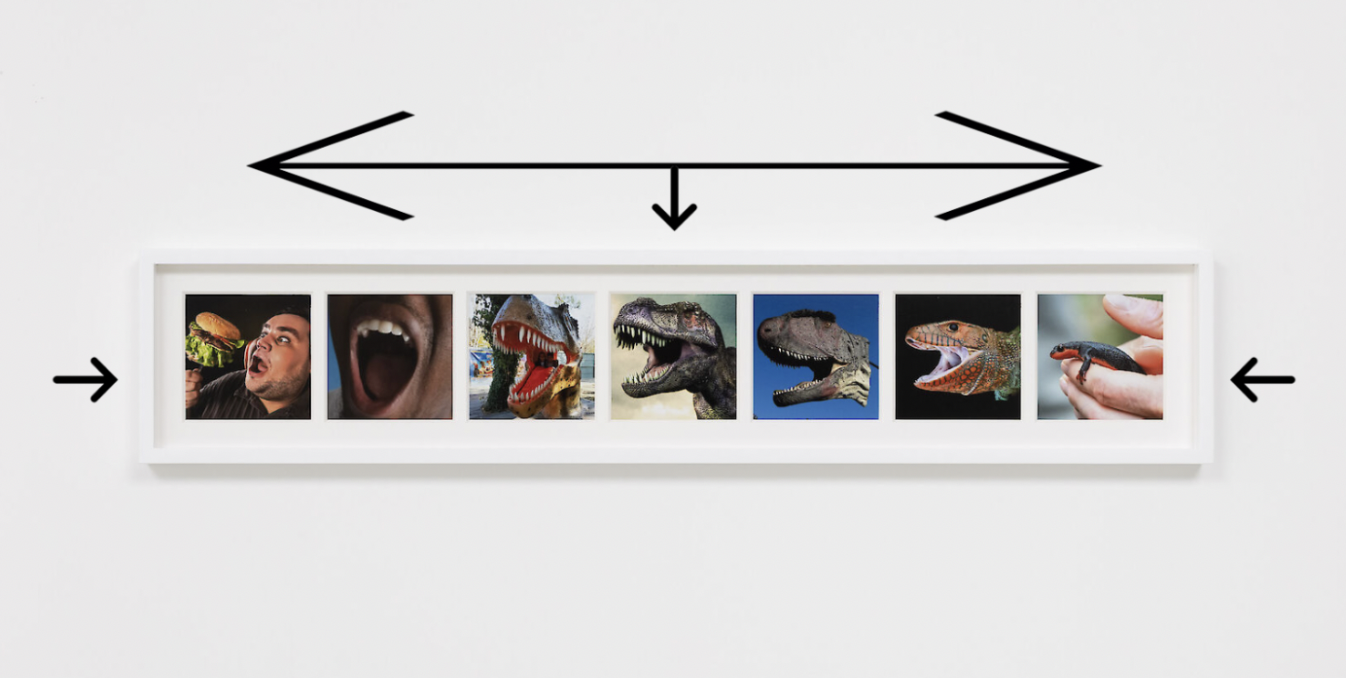
Ed Fornieles. Dinosaurs & Strange Creatures with Mr. Know-it-Owl, 2021
Large format inkjet print on semi gloss photographic paper, mount board with multi aperture windows
18.5 x 93.5 x 4 cm
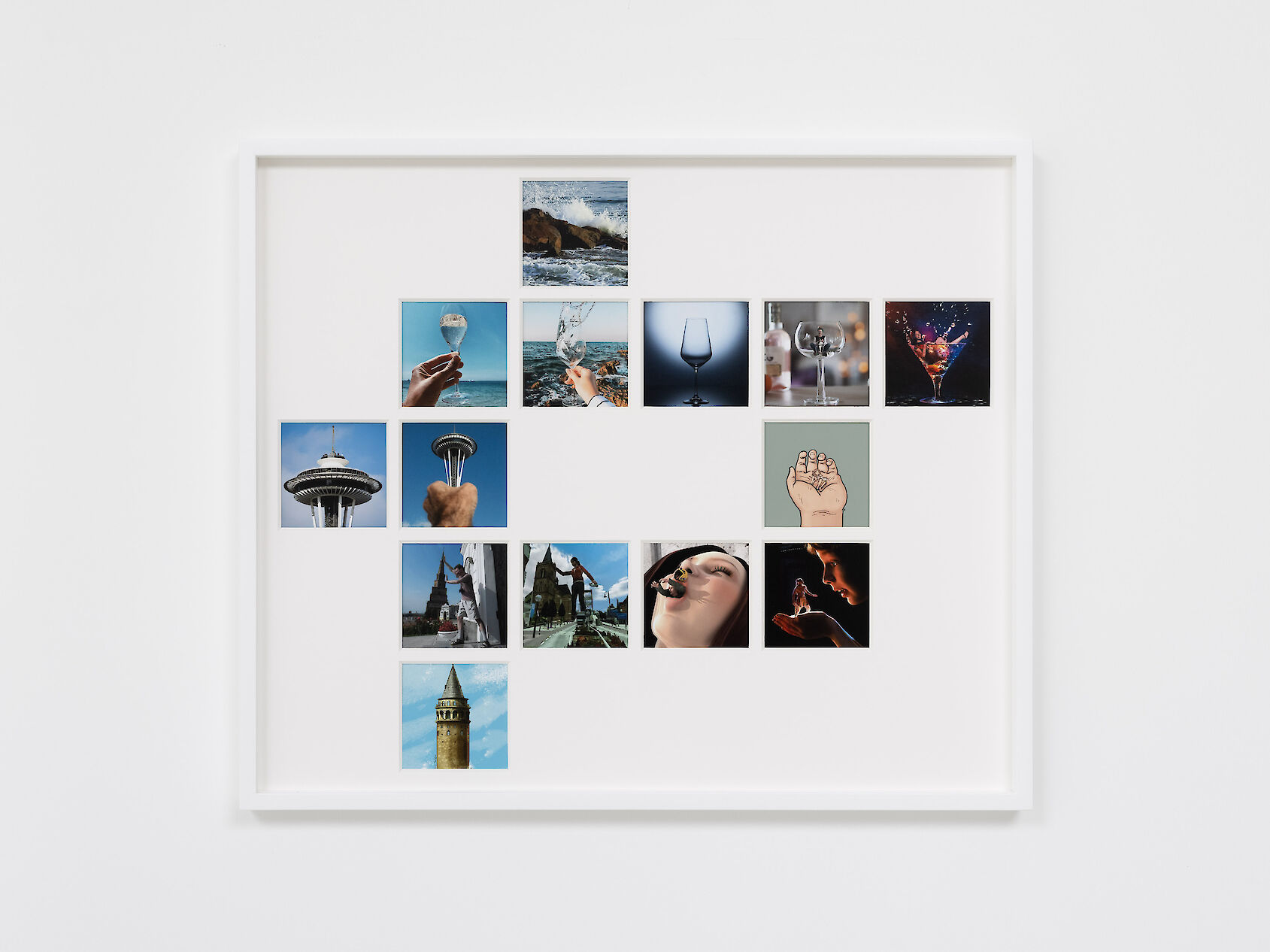
Ed Fornieles. Man Eating Pumpkins? Charlie Brown Great Pumpkin Theory, 2021
Large format inkjet print on semi gloss photographic paper, mount board with multi aperture windows
53 x 62.5 x 4 cm
^ Example of ‘looped’ associations series
- multiple origin points with interior image connections. Up to 3 connection points. In The Loop (pictured below), Fornieles explains no “cluster of two by two may form a block”. The series is kept as ‘step by step’ associations.
- In contrast to ‘edge to edge’ image displays in something like Instagram Explore Feeds:
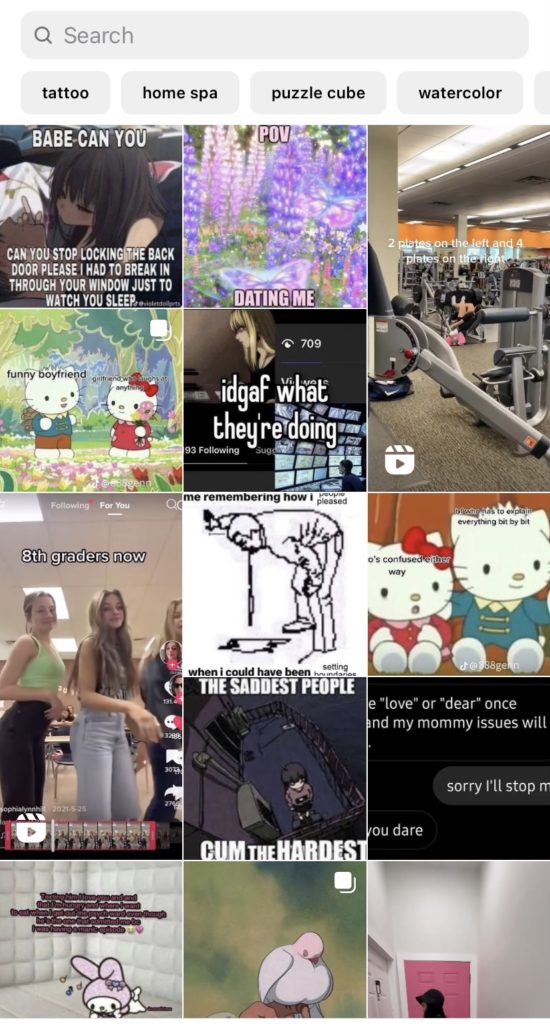
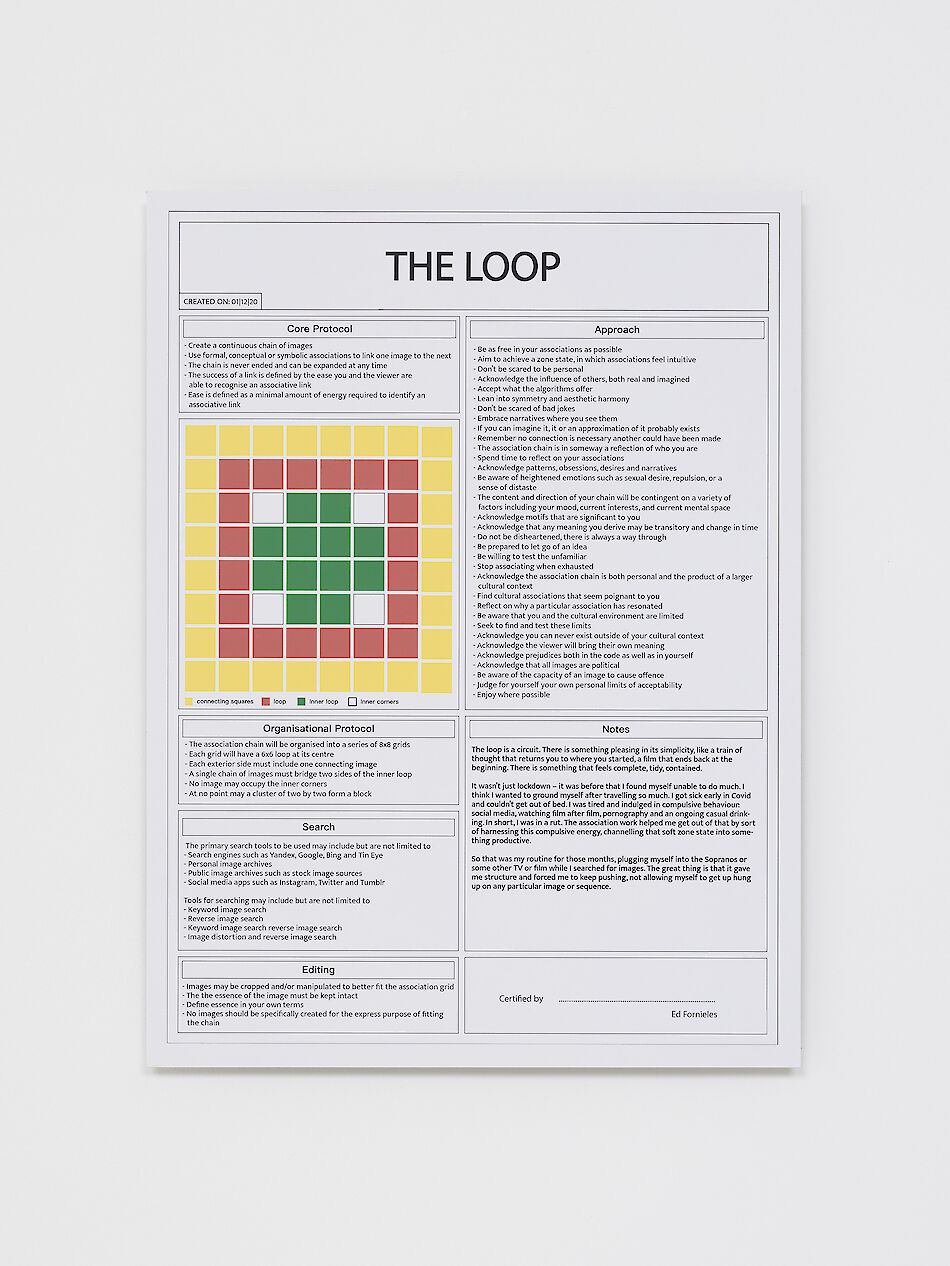
Ed Fornieles, The Loop, 2021
Large format inkjet print on matte photographic paper mounted on aluminum
41 x 30.5 cm
Looped-Stage Capitalism
Garfield situates the 1970s punk filmmakers within a disillusioned state and “disenfranchised world” (Garfield) e.g. shrinking social care in Britain:
“The claim from the No Wavers was that of the end of belief in the project of social mobility and its corollary of art as an edifying and transformative cipher.” (Garfield)
- In contrast to Dada’s development in relation to the horrors of WW1 and ties to the Radical Left -> transformative approach and attempts to uproot art
-> failures of the Left (France 1970s), successes of the Right (rise of Neoliberalism 1980s; deregulation (Thatcherite Britain; Reagan’s America)) —> no hope
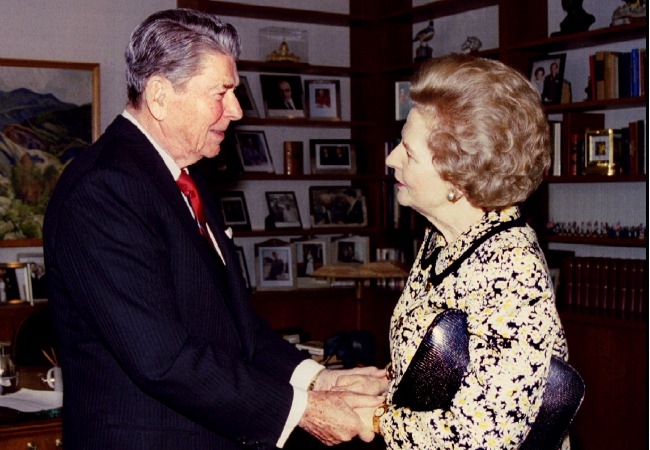
-> ‘Late-Stage Capitalism’ – ‘zombie-ing’ effects of images and social media (technology)
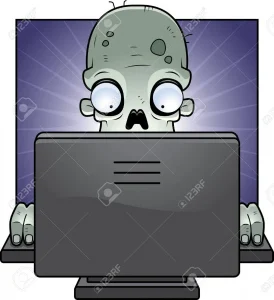
-> irony of phrase suggesting linear trajectory of Capitalism in its ‘later’ stage as opposed to continuously enveloping political, social, labour worlds, etc.
– > 2009 Mark Fisher, Capitalist Realism
- Capitalism as only conceptual and physical reality – ‘no alternative’
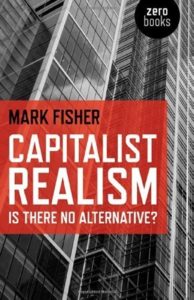
Displays & Circulation of Ed Fornieles’ Associations
As such, the grid has done its job with striking efficiency. The barrier it has lowered between the arts of vision and those of language has been almost totally successful in walling the visual arts into a realm of exclusive visuality and defending them against the intrusion of speech.
– Rosalind Krauss, Grids (1979)
See Rosalind Krauss’s 1979 essay, Grids, in relation to Modernism’s use of the grid as simultaneously functioning as pure materiality and myth:
https://culturescontexts.files.wordpress.com/2013/01/krauss-grids.pdf
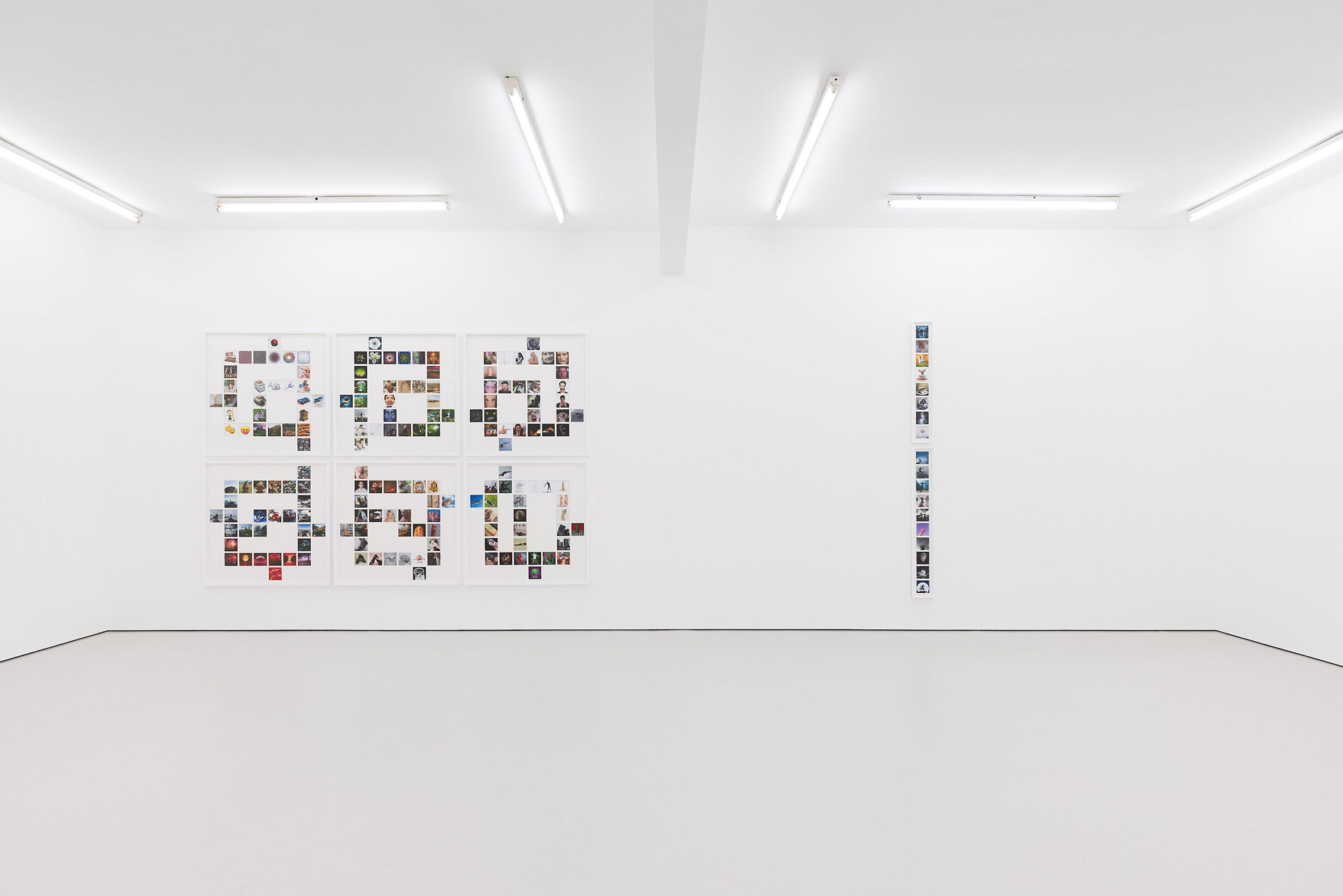
Ed Fornieles, Associations, 2021, Installation View. Carlos/Ishikawa, London.
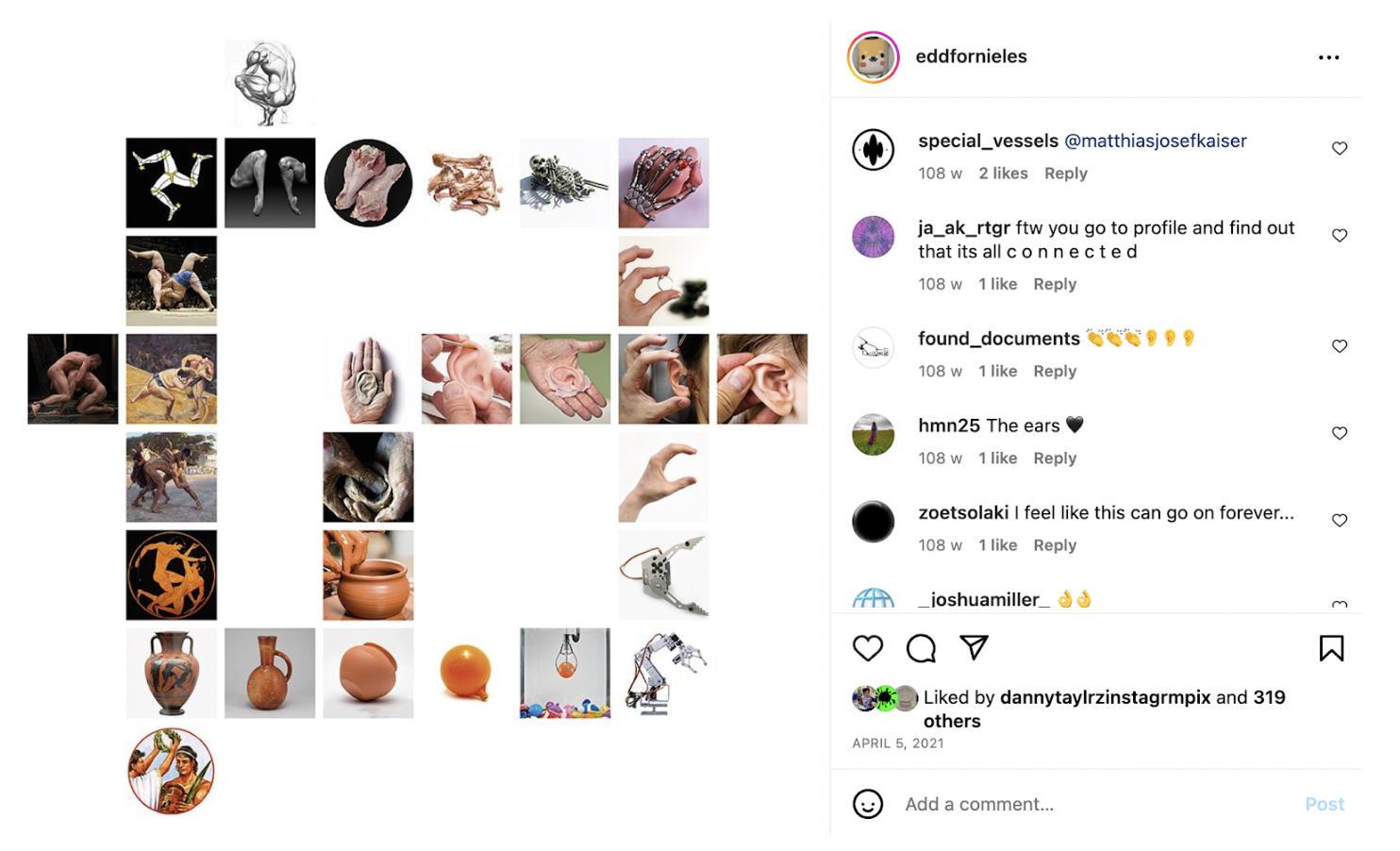
Associations, 2021, @eddfornieles Instagram. 04/06/21
^^^ Note that above we can see two separate presentations of Fornieles’ Associations series:
-
- Firstly, his 2021 solo exhibition at Carlos Ishikawa in London which presented the work in various layouts as framed prints
- Secondly, a post from Fornieles’ Instagram account showing one of the Association works
- Also note that the above shows an Instagram desktop screenshot, which places image and text side by side. Below shows smartphone application layout:
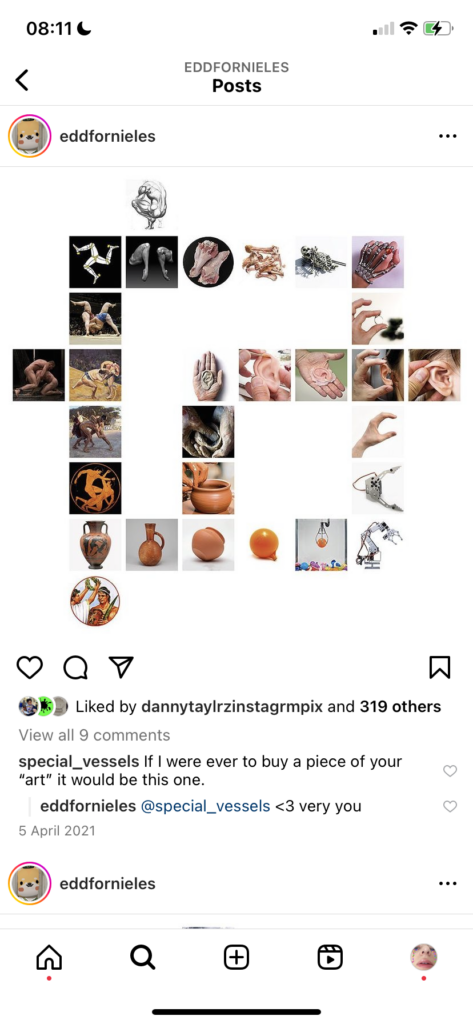
- Although seemingly trivial, these different presentations and layouts play into the conception and dissemination of the work
- Above @zoetsolaki comments on the post, “I feel like this can go on forever…” This is an inevitable and crucial feeling when looking at the work despite Fornieles’ (at least) chosen starting points for each Association series <albeit in the work above, a number of ‘wing’ images signal various beginnings>
- Fornieles’ posts on his feed double back on their own originary conception – Ben Burbridge’s press release for Fornieles’ Carlos/Ishikawa show references the “how image beget image beget image” of our contemporary visual consumption culture
- When Fornieles posts the work in its ‘finished form’ to Instagram, he both cordons it as a formal and polished commentary on this culture but also returns and relegates it from whence it came
Associations – Instagram carousel post from Fornieles’ account:
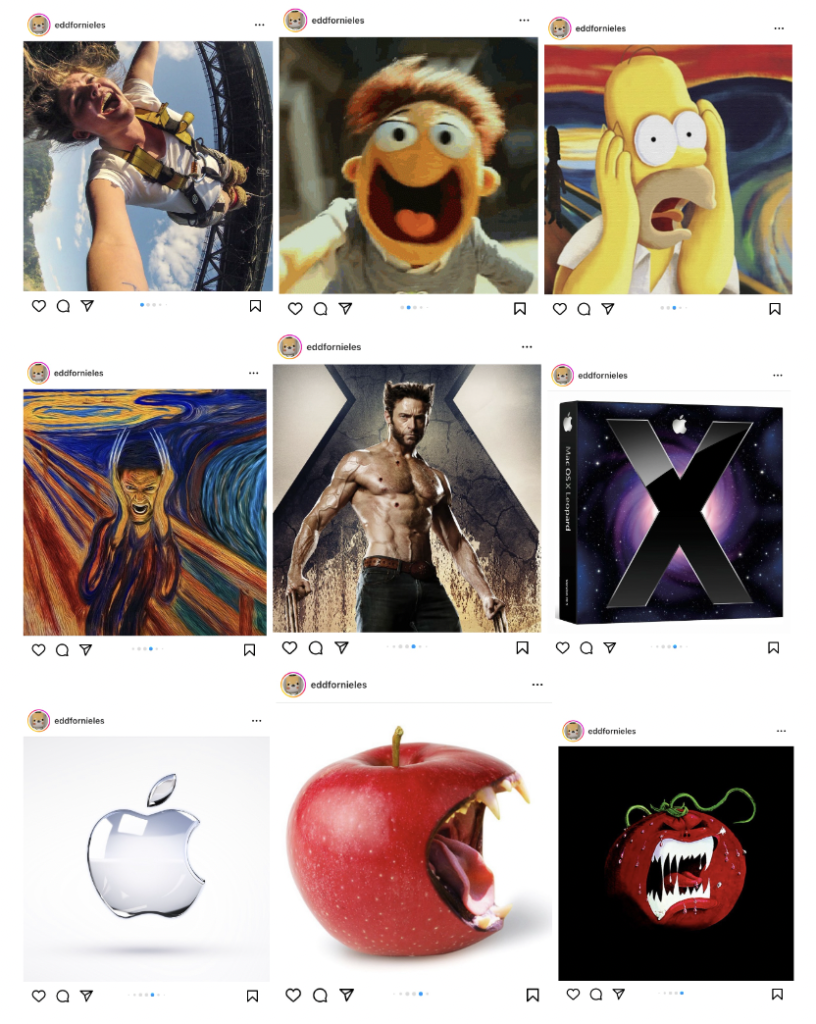
Associations scrolling post @eddfornieles Instagram. 04/11/21.
Linguistic Breakdown
REAL LIFE EXPERIENCE / PHOTO (REAL) / DIRECTION: RIGHT -> 2. PUPPET (REAL/UNREAL) / FACIAL EXPRESSION / PHOTO (REAL) / DIRECTION: FRONT -> 3. CARTOON (UNREAL) / FACIAL EXPRESSION / THE SCREAM (CULTURAL ASSOCIATION) [REFERENCE MERGE DIGITAL IMAGE: ART (MUNCH) / POP CULTURE (SIMPSONS) / DIRECTION: FRONT; RIGHT -> 4. DIGITAL IMAGE (UNREAL) / FACIAL EXPRESSION / THE SCREAM (CULTURAL ASSOCIATION) [REFERENCE MERGE: ART (MUNCH) / POP CULTURE (WOLVERINE) / DIRECTION: FRONT -> 5. PHOTO / DIGITAL IMAGE (REAL / UNREAL) / POP CULTURE (WOLVERINE) / DIRECTION: FRONT; RIGHT -> 6. PRODUCT (REAL; MATERIAL) / SOFTWARE (UNREAL;IMMATERIAL) / IMAGE/TEXT ASSOCIATION: “X-MEN” / MASS CULTURE (APPLE) / DIRECTION: RIGHT -> 7. IMAGE ISOLATION / RENDER (UNREAL) / MASS CULTURE (LOGO; REAL) / DIRECTION: FRONT/RIGHT -> 8. APPLE (REAL) / MOUTH (REAL/UNREAL) [MERGE] / FACIAL EXPRESSION / DIRECTION: RIGHT -> 9. CARTOON (UNREAL) / FACIAL EXPRESSION / DIRECTION: FRONT
